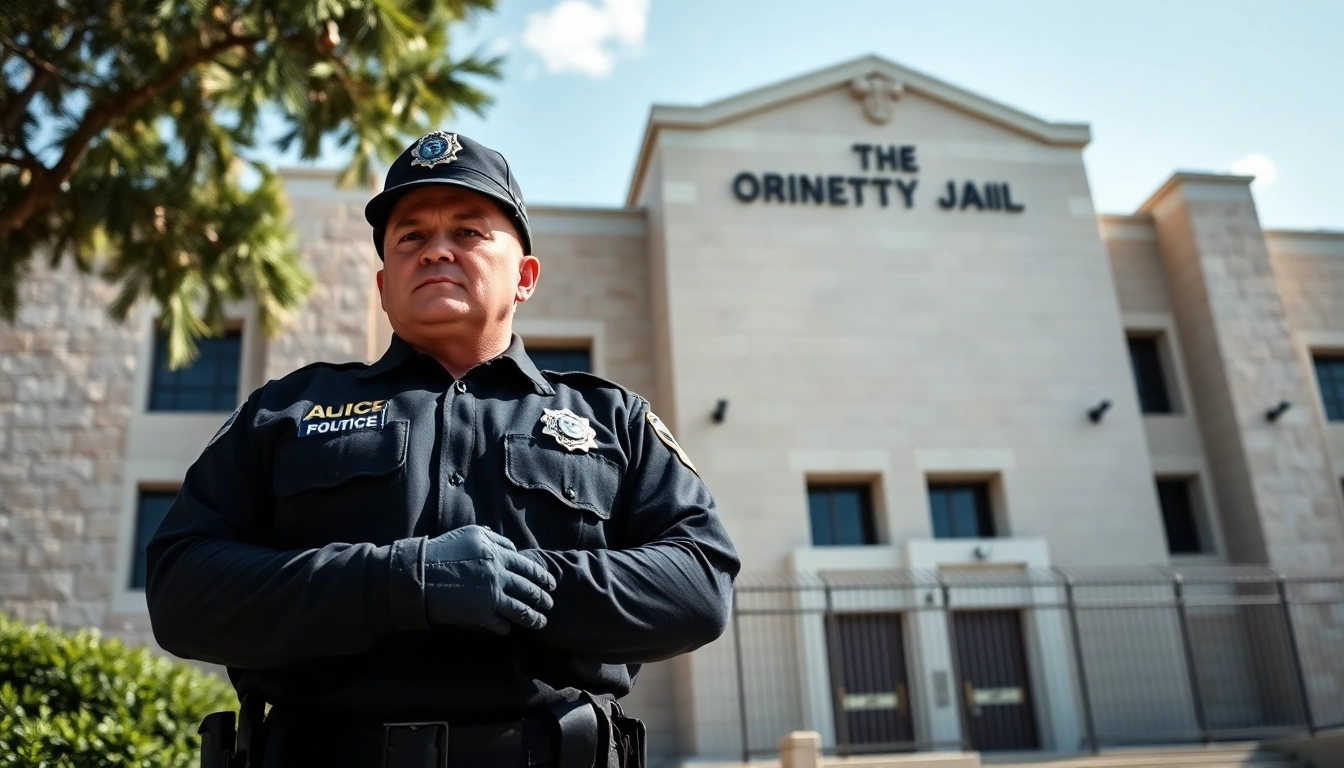Essential Information About the Orange County Jail
Understanding the Orange County Jail System
The orange county jail serves a critical role in the criminal justice system, managing both pre-trial and sentenced individuals. This facility not only houses inmates but also reflects the broader implications of incarceration on community safety and rehabilitation. In this article, we will examine various aspects of the Orange County Jail, including its history, inmate demographics, search protocols, visitation guidelines, legal resources available to inmates, and the security measures in place. Each section aims to provide clarity for those seeking information about the facility and its operations.
Overview of the Orange County Jail
The Orange County Jail is a facility designed to detain individuals awaiting trial or serving short-term sentences. It is equipped to manage a variety of inmate populations, from those who have been arrested for minor offenses to those facing serious criminal charges. Typically, the jail has a capacity to house multiple inmates simultaneously, often divided into various housing units based on the nature of their offenses, age, and behavior. The complexity of managing such a diverse group requires a carefully structured system that maintains safety and security while offering necessary support services.
History and Evolution of the Facility
The Orange County Jail’s history is rooted in the region’s development as a community, evolving significantly over the years. Initially constructed to accommodate a smaller inmate population, the facility has undergone numerous renovations and expansions to meet increasing demands. Each transformation aimed at not only increasing capacity but also modernizing inmate management systems, improving safety protocols, and incorporating rehabilitation programs. Understanding the historical context of the jail provides insight into its current operations and ongoing challenges, including overcrowding and the need for enhanced mental health resources.
Types of Inmates Housed in Orange County Jail
The types of inmates housed within the Orange County Jail include a spectrum of offence levels and legal statuses. In general, there are three primary categories of inmates:
- Pre-Trial Detainees: Individuals who are awaiting trial and have not yet been convicted. These inmates are presumed innocent until proven guilty.
- Sentence Serving Inmates: Those who have been convicted of lesser crimes and are serving short sentences within the county jail.
- Individuals Held for Immigration Violations: These inmates may be detained for immigration-related offenses and their release can be affected by federal regulations.
The diverse range of inmates presents unique challenges in terms of management and rehabilitation efforts, necessitating tailored approaches to each group’s specific needs.
Inmate Search and Booking Information
How to Access Inmate Records at Orange County Jail
Ensure that when searching for inmate information, you have relevant details at hand, such as the inmate’s full name or booking number if known, to streamline the process.
Understanding Booking Procedures
The booking process at the Orange County Jail involves several critical steps designed to ensure the identification of each inmate and the safety of the facility. Typically, the process includes:
- Initial Processing: This involves taking the inmate’s personal information, capturing fingerprints, and conducting background checks.
- Health Assessments: Each inmate will undergo a basic health screening to identify any immediate medical needs.
- Classification: Once processed, inmates are classified based on a range of factors, including their charges, behavior history, and personal circumstances, which determines where they will be housed.
Understanding these procedures can prepare families for what to expect during the arrest process and help to ease the anxiety associated with incarceration.
Common Questions Regarding Inmate Searches
Inmate searches can often raise numerous questions. Here are some frequently asked questions regarding the process:
- How often is inmate information updated? Inmate databases are typically updated regularly, often in real-time, but it can vary by facility.
- Can I find mugshots online? Many inmate databases include booking photos, but the availability of mugshots may vary depending on specific jail policies.
- Is there a fee to access inmate information? Generally, accessing inmate information through governmental databases is free of charge.
- What if I cannot find an inmate online? If you’re having trouble finding an inmate online, consider reaching out to the jail directly for assistance.
Visitation Guidelines for Orange County Jail
General Visitation Rules and Schedules
Visitation at the Orange County Jail is an essential aspect of maintaining inmate morale and allowing for communication with the outside world. However, there are established rules and schedules that must be followed:
- Visitation Hours: Specific days and hours are allocated for visitation, typically divided between weekday and weekend slots.
- Registration Requirements: Visitors may need to register in advance, providing identification and potentially undergoing a background check.
- Dress Code: There are usually dress codes that dictate appropriate clothing to ensure safety and decorum during visits.
By adhering to these guidelines, visitors can ensure they are permitted to see their loved ones without issue.
How to Prepare for a Visit
Preparation is key when planning a visit to the Orange County Jail. To ensure a smooth visitation experience, consider the following:
- Check Visitation Policies: Make sure to familiarize yourself with the jail’s visitation rules, including any limits on the number of visitors.
- Gather Necessary Identification: Bring valid photo identification, as this is often required for entry.
- Arrive Early: Plan to arrive early to account for potential delays in security checks or registration.
- Leave Personal Items Behind: Most facilities restrict visitation items. Therefore, it’s best to leave unnecessary personal belongings at home.
What to Expect During Your Visit to Orange County Jail
Visiting the Orange County Jail can be a daunting experience, especially for first-timers. Here’s what to expect:
- Security Screening: Expect to undergo security screenings, which may involve metal detectors and pat-downs.
- Waiting Periods: There may be waiting times involved, so patience is essential.
- Interaction Setting: Visits typically occur in a controlled environment, where interactions might be monitored or limited to telephonic communication.
Understanding these dynamics can help ease anxiety and make the visit more meaningful for both the visitor and the inmate.
Legal and Support Resources for Inmates
Available Legal Aid Services
Inmates at the Orange County Jail have access to various legal resources to assist them during their incarceration. Legal aid services can be critical for navigating the justice system:
- Public Defenders: For those unable to afford private counsel, public defenders are available to offer representation in legal matters.
- Legal Clinics: Many nonprofit organizations run legal clinics that assist inmates with queries regarding their rights and the legal processes.
- Access to Legal Resources: Inmates usually have access to legal libraries and can communicate with their attorneys while incarcerated.
Utilizing these resources can ensure that inmates have the proper legal representation they need throughout their cases, which is essential for fair judicial proceedings.
Mental Health Support for Inmates
The mental health of inmates is a critical consideration for their rehabilitation. At the Orange County Jail, various mental health resources are available:
- Counseling Services: Professional counselors are often available to assist inmates coping with stress, anxiety, or other mental health issues.
- Psychiatric Care: Inmates requiring more intensive care can typically be scheduled for evaluations and treatment by qualified psychiatrists.
- Support Groups: Organized support groups can offer peer support, providing inmates with a platform to discuss their challenges.
Access to these resources is vital, as it supports inmates’ mental well-being and aids in their eventual reintegration into society.
Programs for Rehabilitation and Reentry
Rehabilitation programs are crucial in addressing the underlying issues that may have contributed to an inmate’s criminal behavior. The Orange County Jail offers several initiatives aimed at reducing recidivism:
- Educational Classes: Inmates can participate in educational programs designed to help them earn GEDs or other qualifications.
- Substance Abuse Treatment: Programs focusing on addiction counseling help inmates manage and overcome substance abuse problems.
- Job Training: Vocational training sessions equip inmates with skills needed in the workforce post-release, enhancing their chances for a successful reintegration.
These programs not only assist in reducing the likelihood of re-offending but also empower inmates with the tools needed for a productive life after incarceration.
Maintaining Safety and Security at Orange County Jail
Overview of Security Measures in Place
Ensuring safety and security within the Orange County Jail is a top priority. Several measures are employed to maintain a secure environment:
- Surveillance Systems: The facility is monitored through extensive surveillance systems, covering both common areas and sensitive locations.
- Regular Inspections: Frequent inspections are conducted to identify potential security breaches or contraband.
- Staff Training: Jail staff undergo comprehensive training in crisis intervention and conflict de-escalation techniques to manage inmate behavior effectively.
These measures help create a secure environment for both inmates and staff while allowing effective management of the facility.
Staffing and Training for Effective Management
The training and management of staff play a crucial role in maintaining the efficiency of the Orange County Jail. Key aspects include:
- Ongoing Education: Staff engage in continual learning opportunities that cover new laws, protocols, and best practices in corrections.
- Specialized Units: The presence of specialized units, such as crisis negotiation teams, enables more refined management of challenging situations.
- Emphasis on Communication: Effective teamwork and communication among correctional officers are emphasized, promoting a safer environment for all parties involved.
The combination of well-trained staff and effective management strategies contributes significantly to the overall operation of the jail.
Community Impact and Public Safety Concerns
The presence of the Orange County Jail raises important questions about community impact and public safety. Issues surrounding incarceration affect not only inmates but also their families and the broader community. Key concerns include:
- Recidivism Rates: High recidivism can lead to increased rates of crime, necessitating effective rehabilitation to prevent this cycle.
- Public Perception: The community’s perception of the jail can influence public support for criminal justice initiatives and funding.
- Reintegration of Inmates: Ensuring that released inmates have the tools they need to reintegrate successfully is essential for community safety and cohesion.
By prioritizing rehabilitation and community engagement, the Orange County Jail can work toward creating a safer environment and ultimately reduce the long-term impact of incarceration.














Post Comment